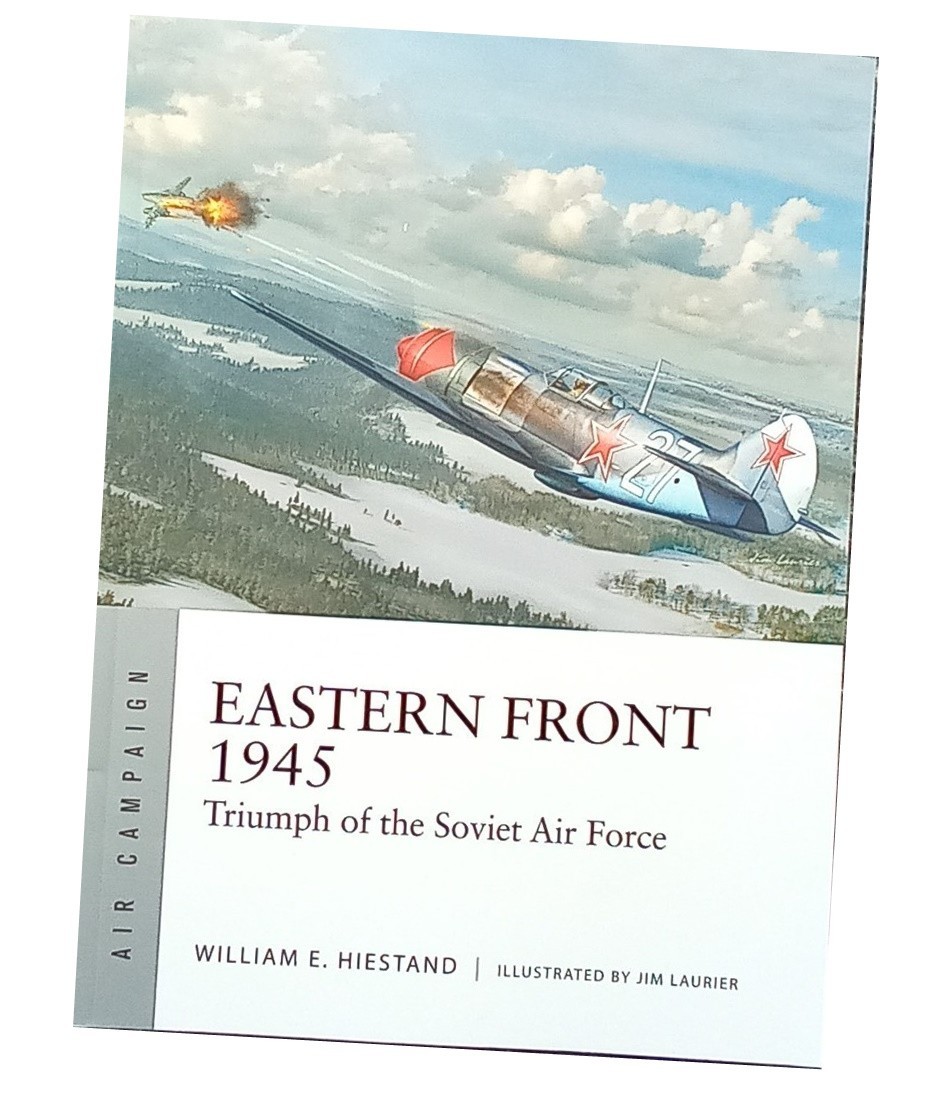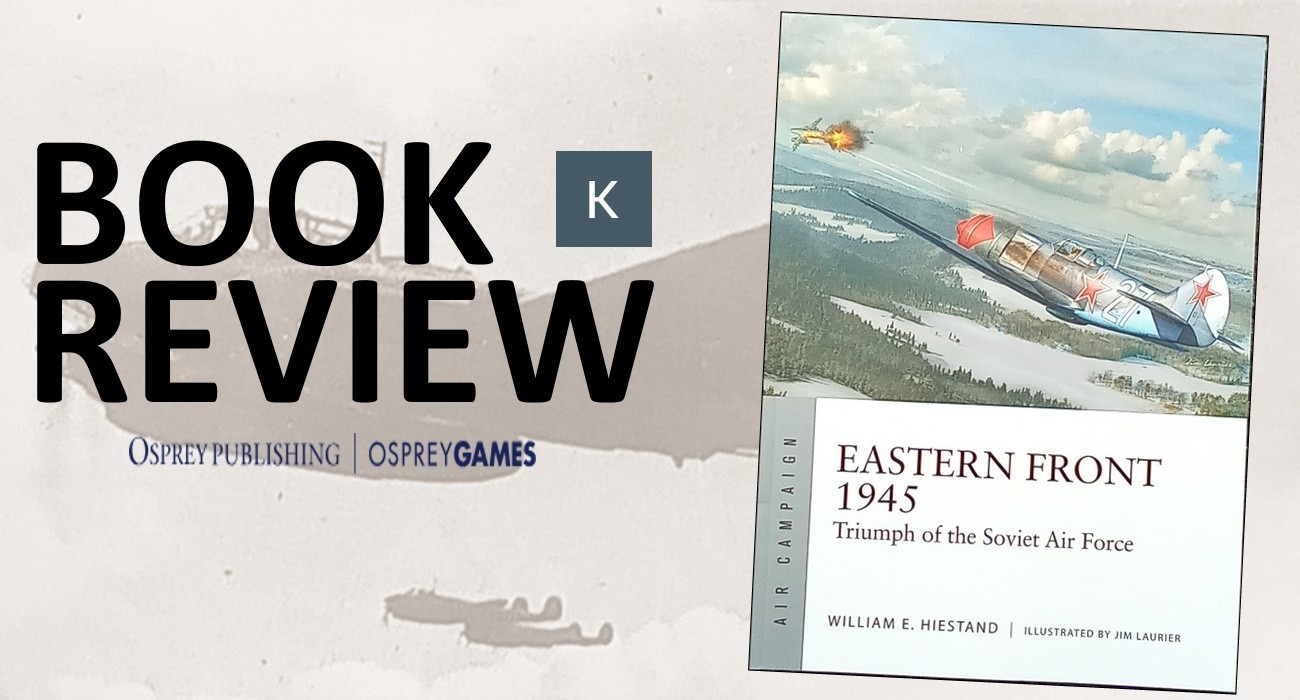
The last months of World War II on the Eastern Front saw a ferocious fight between two very different air forces. Soviet Air Force (VVS) Commander-in-Chief Alexander Novikov assembled 7,500 aircraft in three powerful air armies to support the final assault on Berlin. The Luftwaffe employed some of its most advanced weapons including the Me 262 jet and Mistel remotely-guided bomb aircraft.
Using photos, 3D diagrams, maps and battlescene artwork, William E. Hiestand, a military analyst with a longstanding interest in Soviet military history, explains how Germany's use of high-tech weaponry and massed Soviet air assaults was not just the culmination of World War II air combat, but also pointed to how the future rivalry with NATO would play out. The VVS used powerful and flexible air armies to control and employ its huge force of aircraft – organizational and employment concepts that would shape Soviet plans and preparations for combat during the Cold War.
For the first time, this volume explains how air power helped win the war on the Eastern Front, and how victory shaped Soviet air power doctrine for the decades to come.
INTRODUCTION
CHRONOLOGY
ATTACKER'S CAPABILITIES
– The VVS on the brink of victory
– Overall Soviet organization
– Aircraft roles and capabilities
– VVS Order of Battle, January 1945
– VVS Order of Battle, April 1945
DEFENDER'S CAPABILITIES
– The last of the Luftwaffe
– Aircraft, roles, and capabilities
– Luftwaffe Order of Battle, January 1945
– Luftwaffe Order of Battle, April 1945
CAMPAIGN OBJECTIVES
– The road to Berlin
THE CAMPAIGN
– Air war over Poland and Germany
– January 1945: The Vistula–Oder Offensive
– January 1945: The East Prussia Offensive
– The exploitation
– The halt on the Oder
– The fight for the Oder: March–April 1945
– Konigsberg: the fall of the fortress
– Berlin: The final offensive
– The end in the East
– The turn to the flanks – February–March 1945
AFTERMATH AND ANALYSIS
FURTHER READING
INDEX
Essentially this volume is about how Voyenno-vozdushnye sily (VVS) or Soviet Air Fforce, learned from the absolute thrashing handed out to it by the Luftwaffe in 1941, was able to rebound with superior tactics, planes, and pilots, whilst at the same time the Luftwaffe declined in real terms both materially and qualitatively with pilots receiving ever less training prior to deploying.
Whilst the book is balanced, I thought there would be more of a focus on the VVS itself with less space given to the Luftwaffe; but this does provide context and means the book is not a one sided analysis of air war on the Eastern Front in the last year of the war.
A couple of points of interest, to me, were that there was a French and a Czech contingent flying on the Russian front; and, the Russians did not grasp the value / concept of interdiction in depth or to any great extent, instead keeping the fight close to the front lines, whereas the Germans were considering bombing raids east of Moscow - hence the image of the He 177.
The book is well written, gives a good explanation of how the Soviet Air Force did triumph on the Eastern Front, and is supported with good analysis and numbers - for example, page 10, VVS fielded 14 046 combat aircraft against 4 500 in 1945.
I was surprised there were no aircraft profiles and / or aces, but then the book is written at the strategic level, rather than tactical or operational, so makes sense these are omitted.
The publisher's blurb is a little misleading in that the book covers much more than how the VVS defeated "Luftwaffe's high-tech Me 262 jets and Mistel exploding drones." These were such a minor feature of the Eastern Front air war, for example, "By January 1945, around 1000 [Me 262} been built but only 60 were with front-line units...", the majority being deployed against the massed formations of American and English bombers.
There is an honorable (?) mention of Reichmarschall Hermann Goering and his declining interest in all things Luftwaffe as losses mounted, and therefore his declining influence with Der Führer, to the point that the former did not attending meetings with the latter, diminishing the respect and relevance of the Luftwaffe.
I enjoyed the read, the narrative flows well, is concise even if it does wander away from the title on occasion, but this serves to give context to the larger point which is that the VVS was an entirely different entity at the end of the war as it was at the start.
Easily recommended.
Beautiful artwork I
Beautiful artwork II
A dire situation...
check out that line graph:
He 177

